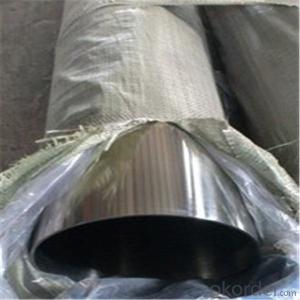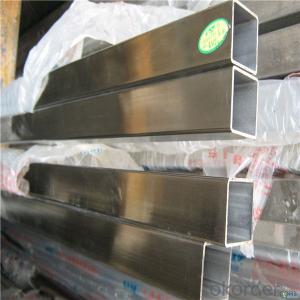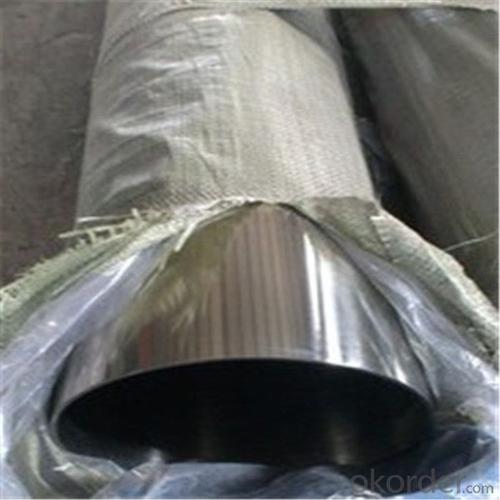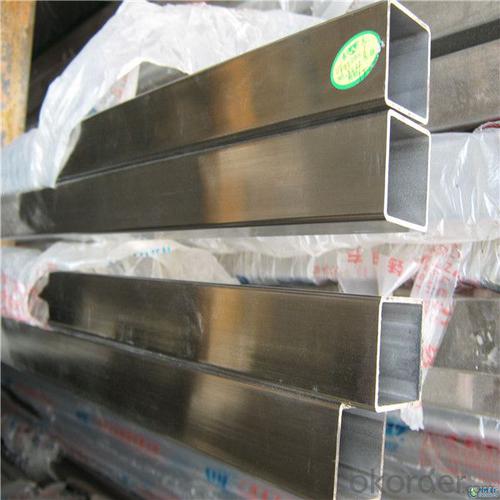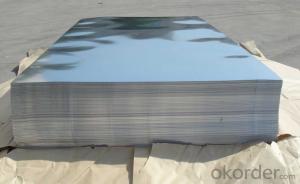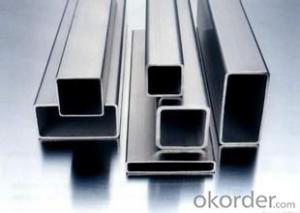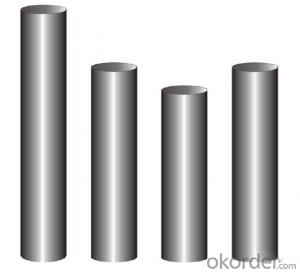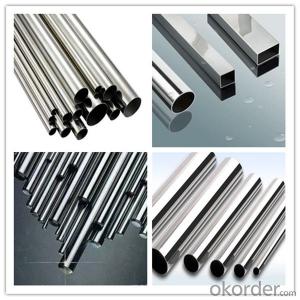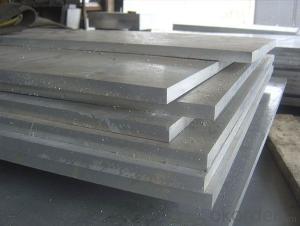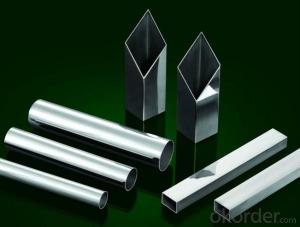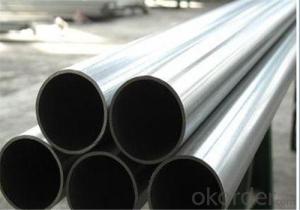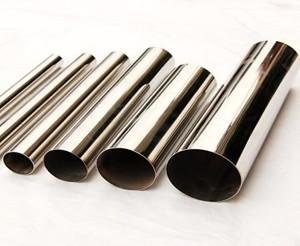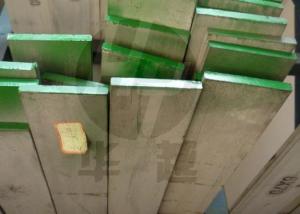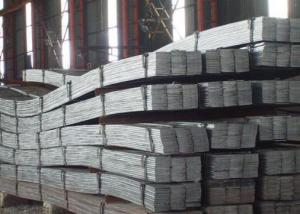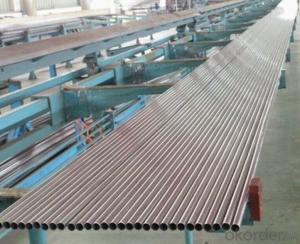Wholesales Stainless Steel Pipe 201 tube 1mm thick
- Loading Port:
- Shanghai
- Payment Terms:
- TT OR LC
- Min Order Qty:
- 3 m.t.
- Supply Capability:
- 25000 m.t./month
OKorder Service Pledge
OKorder Financial Service
You Might Also Like
Specification
Wholesales Stainless Steel Pipe 201 tube 1mm thick
Product Description
Name | Wholesales Stainless Steel Pipe 201 tube 1mm thick | |||||
Items | Square tubes, round tubes, oval pipes, special shaped pipes, empaistic pipes, fittings | |||||
Standard | ASTM A554, A249, A269 and A270 | |||||
Material Grade | 201: Ni 0.8%~1% | |||||
202: Ni 3.5%~4.5% | ||||||
304: Ni 8%, Cr 18% | ||||||
316: Ni 10%, Cr 18% | ||||||
316L: Ni10%~14% | ||||||
430: Cr16%~18% | ||||||
Outer Diameter | 9.53mm--159mm | |||||
Thickness | 0.3mm - 3.0mm | |||||
Length | 6m or as customers' request | |||||
Tolerance | a) Outer Diameter: +/- 0.2mm | |||||
b) Thickness: +/- 0.02mm | ||||||
c) Length: +/- 5mm | ||||||
Surface | 180G, 240G, 320G Satin / Hairline 400G, 600G Mirror finish | |||||
Application | handrail,railing, staircase, weldmesh screen,door,window, balcony,fence,bench,furniture,etc | |||||
Test | Squash test, extended test, water pressure test, crystal rot test, heat treatment, NDT | |||||
Chemical Composition of Material | Material
Composition | 201 | 202 | 304 | 316L | 430 |
C | ≤0.15 | ≤0.15 | ≤0.08 | ≤0.035 | ≤0.12 | |
Si | ≤1.00 | ≤1.00 | ≤1.00 | ≤1.00 | ≤1.00 | |
Mn | 5.5-7.5 | 7.5-10 | ≤2.00 | ≤2.00 | ≤1.00 | |
P | ≤0.06 | ≤0.06 | ≤0.045 | ≤0.045 | ≤0.040 | |
S | ≤0.03 | ≤0.03 | ≤0.030 | ≤0.030 | ≤0.030 | |
Cr | 13-15 | 14-17 | 18-20 | 16-18 | 16-18 | |
Ni | 0.7-1.1 | 3.5-4.5 | 8-10.5 | 10-14 | ||
Mo | 2.0-3.0 | |||||
Mechanical Property | Material Item | 201 | 202 | 304 | 316 | |
Tensile Strength | ≥535 | ≥520 | ≥520 | ≥520 | ||
Yield Strength | ≥245 | ≥205 | ≥205 | ≥205 | ||
Extension | ≥30% | ≥30% | ≥35% | ≥35% | ||
Hardness (HV) | <105< span=""> | <100< span=""> | <90< span=""> | <90< span=""> | ||
Definition of stainless steel(Adopted form Wikipedia)Wholesales Stainless Steel Pipe 201 tube 1mm thick
In metallurgy, stainless steel, also known as inox steel or inox from French "inoxydable",
is defined as a steelalloy with a minimum of 10.5% to 11% chromium content by mass.
Stainless steel does not readily corrode, rust or stain with water as ordinary steel does,
but despite the name it is not fully stain-proof, most notably under low oxygen, high salinity,
or poor circulation environments. It is also called corrosion-resistant steel or CRES
when the alloy type and grade are not detailed, particularly in the aviation industry.
There are different grades and surface finishes of stainless steel to suit the environment
the alloy must endure. Stainless steel is used where both the properties of steel
and resistance to corrosion are required.
Surface Finish Wholesales Stainless Steel Pipe 201 tube 1mm thick:
Surface finish | Characteristics and application |
No.2B | The surface brightness and flatness of no2B is better than no2D. then through a special surface treatment to improve its mechanical properties, No2B could nearly satisfy comprehensive uses. |
No.3 | Polished with abrasive belt of git#100-#200, have better brightness with discontinuous coarse stria, used as inner and external ornaments for building, electrical appliances and kitchen utensils etc. |
No.4 | Polished with abrasive belt of grit #150-#180,have better brightness with discontinuous coarse stria, but thinner than No3, are used as bathtub buildings inner and external ornaments electrical appliances kitchen utensils and food processing equipment etc. |
HL | Polished with abrasive belt of grit #150-#320 on the NO.4 finish and has continuous streaks, mainly used as buildings ornaments elevators, door of building, frontal plate etc. |
BA | Cold rolled, bright annealed and skin-passed, the product have excellent brightness and good reflexivity like mirror, kitchen apparatus, ornament etc. |
8K | The product have excellent brightness and prefer reflexivity can to be the mirror. |
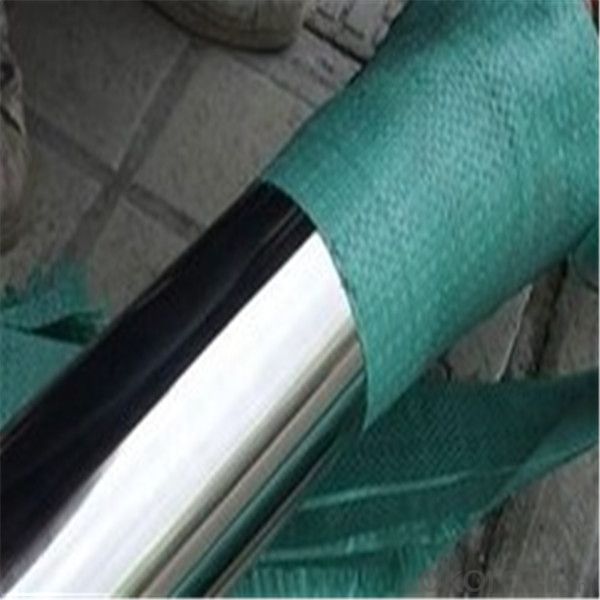
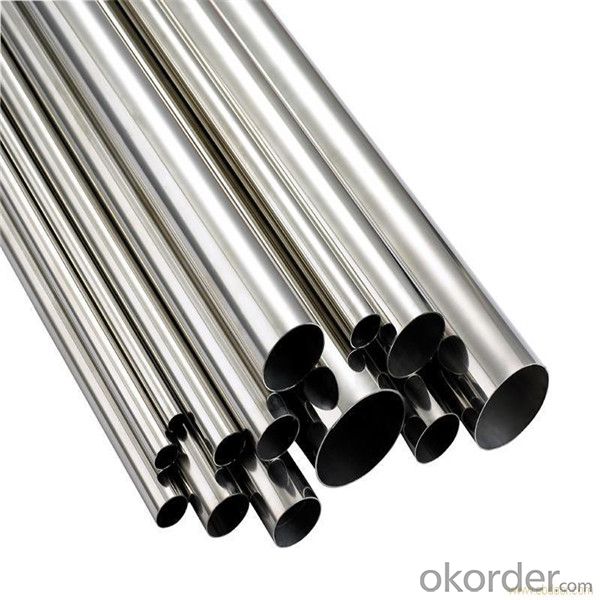
- Q: How thick is the 3 stainless steel tube?
- Refers to the stainless steel tube with a wall thickness of 3 mm.
- Q: Can stainless steel pipes be insulated with polyamide?
- Yes, stainless steel pipes can be insulated with polyamide. Polyamide is a type of plastic material that is known for its excellent insulation properties. It can be used as a coating or a lining for stainless steel pipes to provide insulation against heat or cold. The polyamide insulation helps in preventing heat loss or gain, which is essential for maintaining the desired temperature of fluids or gases flowing through the pipes. Additionally, polyamide also offers protection against corrosion and mechanical damage, further enhancing the durability and lifespan of the stainless steel pipes.
- Q: How is stainless steel pipe manufactured?
- Stainless steel pipe is manufactured through a process called seamless or welded pipe manufacturing. In the seamless method, a solid cylindrical billet of stainless steel is heated and pierced to form a hollow tube. This tube is then elongated and rolled to the desired diameter and thickness. Welded stainless steel pipe, on the other hand, involves the joining of two or more stainless steel plates or coils through a welding process. The resulting pipe is then further processed and finished to meet specific industry standards and requirements.
- Q: What is the difference between 304J6 and 316J6 stainless steel pipes?
- The main difference between 304J6 and 316J6 stainless steel pipes lies in their composition and properties. 304J6 stainless steel is a low carbon variation of the popular 304 stainless steel. It contains around 18% chromium and 8% nickel, which provides excellent corrosion resistance and durability. This grade is commonly used in various applications, including food processing, chemical processing, and architectural purposes. On the other hand, 316J6 stainless steel is an austenitic stainless steel grade known for its higher corrosion resistance compared to 304J6. It contains around 16-18% chromium, 10-14% nickel, and 2-3% molybdenum. The addition of molybdenum enhances its resistance to pitting and crevice corrosion in chloride environments, making it suitable for marine and coastal applications. In terms of mechanical properties, both grades offer good strength and toughness. However, 316J6 stainless steel typically has higher tensile strength and hardness due to its alloy composition. When it comes to price, 316J6 stainless steel pipes are generally more expensive than 304J6 due to the higher cost of molybdenum. Therefore, the choice between the two grades depends on the specific requirements of the application and the level of corrosion resistance needed.
- Q: Are stainless steel pipes suitable for sanitary applications?
- Yes, stainless steel pipes are highly suitable for sanitary applications. They are corrosion-resistant, easy to clean, and have excellent hygienic properties, making them ideal for use in industries such as food and beverage, pharmaceuticals, and water treatment.
- Q: Can stainless steel pipes be insulated with polystyrene sulfonate?
- Yes, stainless steel pipes can be insulated with polystyrene sulfonate. Polystyrene sulfonate is a type of insulation material that is commonly used for its excellent thermal and moisture resistance properties. It can be applied to stainless steel pipes to reduce heat loss or gain and prevent condensation. This insulation material can provide effective insulation in a wide range of temperatures and is often chosen for its durability and long-lasting performance. However, it is important to ensure that the polystyrene sulfonate insulation is compatible with the specific application and meets the necessary safety and regulatory requirements.
- Q: Can stainless steel pipes be used in pharmaceutical industries?
- Yes, stainless steel pipes can be used in pharmaceutical industries. Stainless steel is highly resistant to corrosion, easy to clean, and does not react with most chemicals, making it a suitable material for pharmaceutical applications where hygiene and product purity are crucial.
- Q: Are stainless steel pipes suitable for solar power systems?
- Stainless steel pipes prove themselves as a suitable option for solar power systems. Their exceptional resistance to corrosion, a renowned characteristic of stainless steel, renders them an optimal choice for solar power systems that encounter diverse weather conditions. The transportation of fluids, such as water or heat transfer fluids, often arises as a necessity in solar power systems, and stainless steel pipes effectively cater to these requirements. Additionally, the durability and prolonged lifespan of stainless steel pipes ensure the longevity and efficiency of the solar power system. Moreover, stainless steel, being a sustainable and environmentally friendly material, harmonizes well with the renewable energy objectives of solar power systems. In conclusion, stainless steel pipes emerge as a dependable and appropriate selection for solar power systems.
- Q: Can stainless steel pipes be used for rainwater harvesting systems?
- Yes, stainless steel pipes can be used for rainwater harvesting systems. Stainless steel is a durable and corrosion-resistant material, making it an excellent choice for collecting and storing rainwater. Furthermore, stainless steel pipes are easy to maintain and have a long lifespan, ensuring the longevity and effectiveness of the rainwater harvesting system. Additionally, stainless steel pipes are hygienic and do not contaminate the collected rainwater, making them a safe option for storing water for various purposes such as irrigation, cleaning, or even drinking in some cases.
- Q: What is the difference between seamless and cold-drawn stainless steel pipes?
- The main difference between seamless and cold-drawn stainless steel pipes lies in the manufacturing process. Seamless pipes are made by piercing a solid billet of stainless steel and then rolling it to form a cylindrical shape, resulting in a smooth and continuous surface without any welded seams. On the other hand, cold-drawn pipes are produced by pulling a stainless steel bar through a die to create the desired shape, resulting in a smoother surface finish compared to hot-rolled pipes. Additionally, cold-drawn pipes have tighter dimensional tolerances and are typically used in applications where precision and a high-quality surface finish are required.
Send your message to us
Wholesales Stainless Steel Pipe 201 tube 1mm thick
- Loading Port:
- Shanghai
- Payment Terms:
- TT OR LC
- Min Order Qty:
- 3 m.t.
- Supply Capability:
- 25000 m.t./month
OKorder Service Pledge
OKorder Financial Service
Similar products
Hot products
Hot Searches
Related keywords
